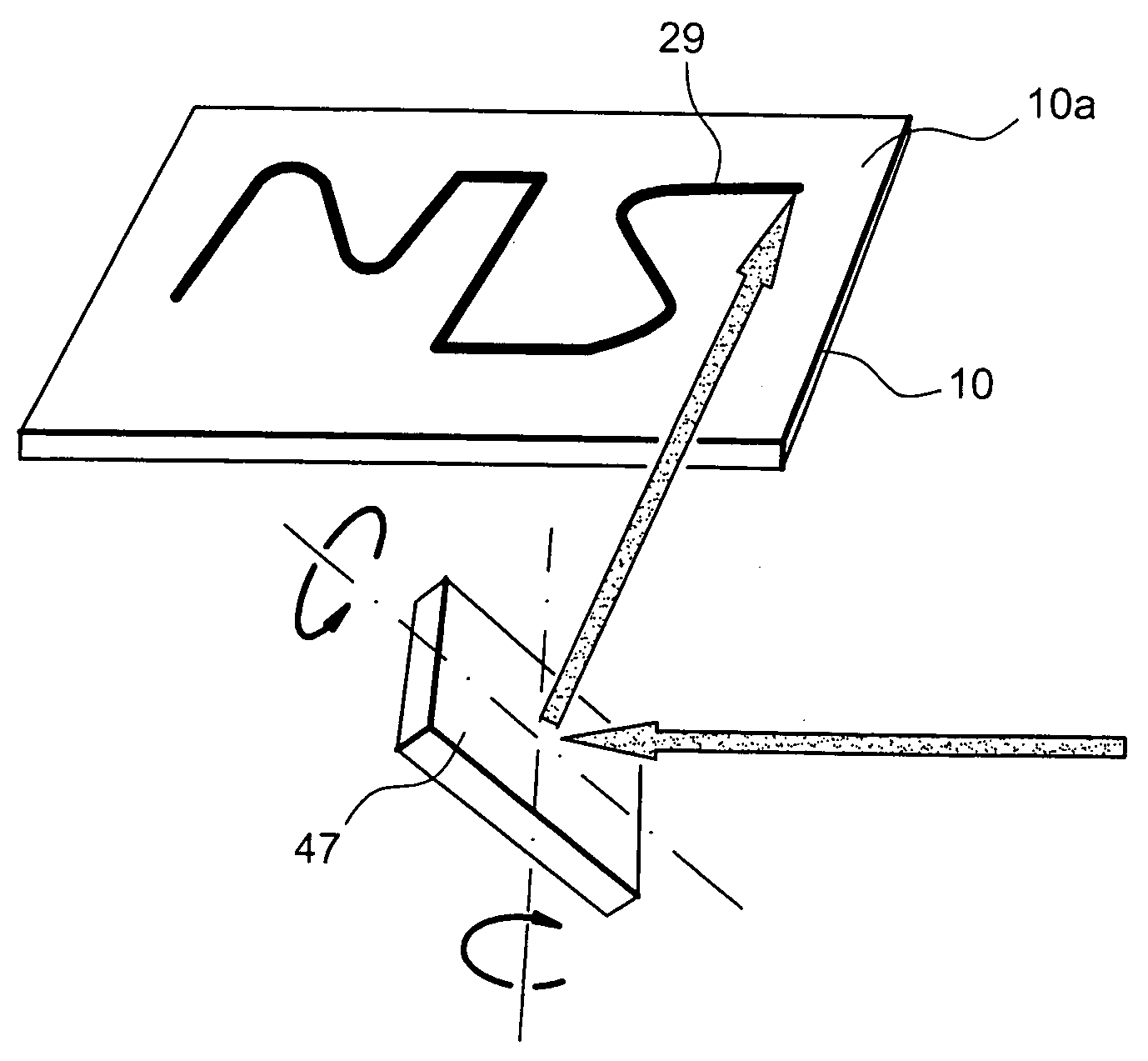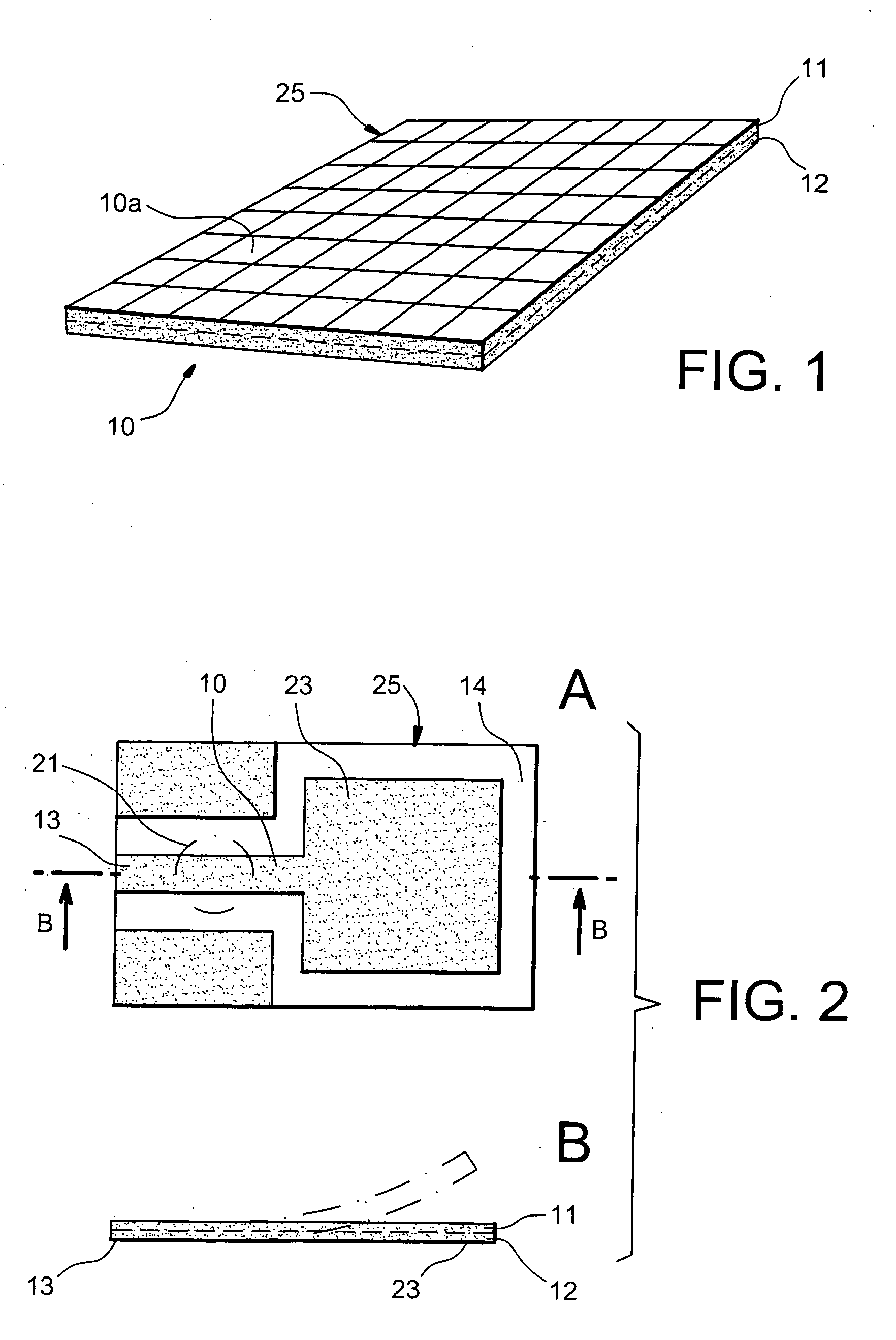Touch-sensitive interface
a touch-sensitive interface and tactile technology, applied in the field of touch-sensitive interfaces, can solve the problems of system bulkyness and complicated assembly of plates and elements
- Summary
- Abstract
- Description
- Claims
- Application Information
AI Technical Summary
Benefits of technology
Problems solved by technology
Method used
Image
Examples
third embodiment
[0056] shown in FIG. 5 part A, the plate 10 is formed by two sub-plates 16, 19 assembled on one another for example by welding or bonding so as to form only a single plate 10. In the preferred form of this embodiment, the two sub-plates 16, 19 are adherent one to the upper face and the other to the lower face of an intermediate layer 18 made of a thermally insulating material. A first sub-plate 16 is made of a shape memory material A. A sub-plate 19 is made of a second shape memory material C having a memorised form different from the memorised form of the first. An exemplary embodiment of a modification element 25 is shown in a plan view in FIG. 5, part B. In this view, only a part 25a of the element 25 made in the upper sub-plate 16 is apparent. A blade 23a is obtained in the sub-plate 16 by means of two recesses 14, a first 14 having a U shape surrounding the blade 23a on three of its sides, and a second 14a having a form of a circle located substantially to the side of the open...
first embodiment
[0062]FIG. 6 shows a an exploded perspective view of a device comprising a tactile interface in the form of a plate 10 according to the present invention, in which control means 40 comprise laser means 42.
[0063] The display device 1 comprises a touch plate 10, as described hereinabove in relation to FIG. 1. The touch plate can also in this case be a plate made of heat-conductive material, in the form of a continuum. In this instance, even though the modification elements of the tactile sensation cannot be distinguished physically, elements do exist all the same. They are determined at each instant, for example in the form of pixels, by the position of the radiation laser on the surface. The size of the pixels here is determined by the size of the minimum surface which is heated by a radiation laser applied to a surface of the plate situated for example opposite the touch surface 10a, without any visual distinction of a delimitation of these elements being possible. The modification ...
second embodiment
[0069]FIG. 7 shows an exploded perspective view of a device comprising a tactile interface in the form of a plate 10 according to the present invention, in which control means 40 comprise laser means 42. In reference to FIG. 6, the translation table 43 has been replaced by mobile mirror 47 mobile according to two perpendicular axes. The laser emitter 42 emits its radiation directly by means of a fibre optic, not shown here, to the mobile mirror 47. The control circuit 41 receiving the tactile data to be displayed, controls by way of position changing means 48, 49 the position in rotation of the mirror 47. Such rotation means of a reflector are known per se.
[0070] The operation is the same as in the example shown in FIG. 6, with the radiation shift being in this case produced by rotation controlled by the mirror 47.
[0071]FIG. 8 shows an exploded perspective view of a third embodiment of a device comprising a tactile interface in the form of a plate 10 according to the present invent...
PUM
 Login to View More
Login to View More Abstract
Description
Claims
Application Information
 Login to View More
Login to View More - R&D
- Intellectual Property
- Life Sciences
- Materials
- Tech Scout
- Unparalleled Data Quality
- Higher Quality Content
- 60% Fewer Hallucinations
Browse by: Latest US Patents, China's latest patents, Technical Efficacy Thesaurus, Application Domain, Technology Topic, Popular Technical Reports.
© 2025 PatSnap. All rights reserved.Legal|Privacy policy|Modern Slavery Act Transparency Statement|Sitemap|About US| Contact US: help@patsnap.com



